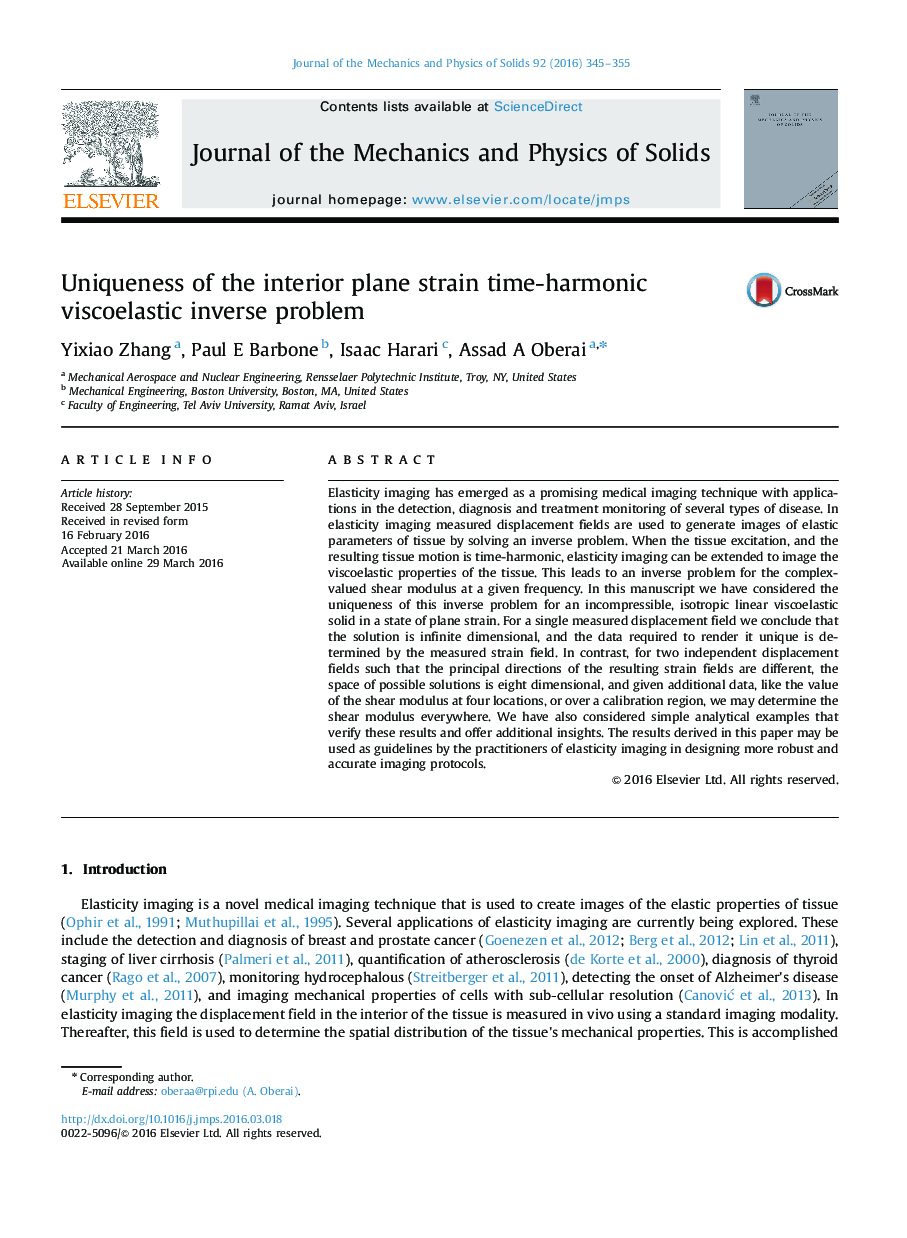| Article ID | Journal | Published Year | Pages | File Type |
|---|---|---|---|---|
| 7177775 | Journal of the Mechanics and Physics of Solids | 2016 | 11 Pages |
Abstract
Elasticity imaging has emerged as a promising medical imaging technique with applications in the detection, diagnosis and treatment monitoring of several types of disease. In elasticity imaging measured displacement fields are used to generate images of elastic parameters of tissue by solving an inverse problem. When the tissue excitation, and the resulting tissue motion is time-harmonic, elasticity imaging can be extended to image the viscoelastic properties of the tissue. This leads to an inverse problem for the complex-valued shear modulus at a given frequency. In this manuscript we have considered the uniqueness of this inverse problem for an incompressible, isotropic linear viscoelastic solid in a state of plane strain. For a single measured displacement field we conclude that the solution is infinite dimensional, and the data required to render it unique is determined by the measured strain field. In contrast, for two independent displacement fields such that the principal directions of the resulting strain fields are different, the space of possible solutions is eight dimensional, and given additional data, like the value of the shear modulus at four locations, or over a calibration region, we may determine the shear modulus everywhere. We have also considered simple analytical examples that verify these results and offer additional insights. The results derived in this paper may be used as guidelines by the practitioners of elasticity imaging in designing more robust and accurate imaging protocols.
Related Topics
Physical Sciences and Engineering
Engineering
Mechanical Engineering
Authors
Yixiao Zhang, Paul E Barbone, Isaac Harari, Assad A Oberai,
